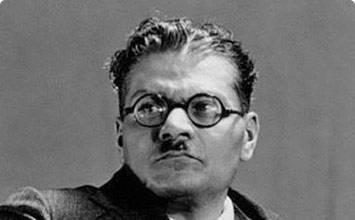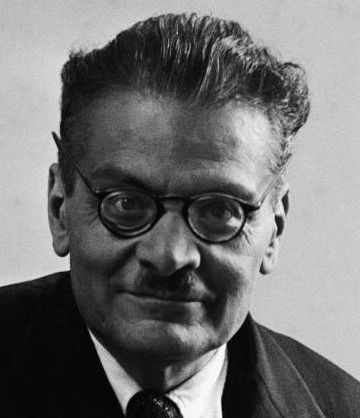



Orozco, José Clemente. – Pittore (Ciudad Guzman 1883 – Città di Messico 1949). Formatosi all’accademia di Belle Arti di Città di Messico, tra il 1911 e il 1914 collaborò con disegni caricaturali a El Ahuizote e a La Vanguardia. Considerato, con D. Rivera e A. Siqueiros, tra i più significativi esponenti della pittura messicana, mostrò fin dalle prime opere la tendenza a rompere i legami con la pittura europea per ricollegarsi a temi locali e del Messico precolombiano. La rivoluzione messicana dette a tale tendenza un preciso contenuto di carattere politico e sociale sviluppando l’efficacia e la potenza creativa dell’artista. Tra il 1927 e il 1932, O. alternò viaggi in Europa e negli USA (Zapata, 1930, Chicago, Art Institute; Zapatistas, 1931, New York, Museum of modern art) ai lunghi soggiorni in Messico dove la sua opera, drammatica, vigorosa, di grandiosità primordiale, trovò la sua più vera espressione nei numerosi e monumentali affreschi a Città di Messico (Escuela preparatoria, 1922–27; Hospicio Cabañas, 1938–39; Hospital de Jesús Nazareno, 1942–48), a Chapultepec (Museo nacional de historia, 1948), ecc.
da: Enciclopedia Treccani


AUTORITRATTO
b.1883,
d.1949 MEXICO
LA RETAGUARDIA (REAR GUARD), 1929
LITHOGRAPH (PUBLISHED IN AN EDITION OF 100; H.18)
ART MUSEUM OF THE AMERICAS, 201 18th Street, N.W. Washington, DC, 20006

immagine di dettagli







http://www.oas.org/artsoftheamericas/jose-clemente-orozco
PER CHI SA L’INGLESE PUBBLICHIAMO UN BEL TESTO DAL LINK SOPRA::
The Mexican Revolution (1910-1920) affected young José Clemente Orozco deeply, and it is probably due to this experience that his work is tainted with brutal violence. A few years after the armed struggle ended, he began painting scenes from the Revolution. He made a long series of ink drawings and prints called México in the Revolution or The Horrors of the Revolution, in which Rear Guard can be placed. Rapes, wounded people, funerals of poor peasants, and people begging for mercy are some of the subjects of his repertoire. His work is frequently compared with Francisco Goya’s series Disasters of War. The title Rear Guard refers to the soldiers at the rear of a military force that protects it from an attack while advancing. In this lithograph we see a group of men, women, and children from behind. Men wrapped in their ponchos with sombreros, and the tips of the rifles pointing in the same direction (to the right) give the group a sense of unity. There are peasants who have become soldiers as well as women who would fight, take care of the wounded, and cook for the soldiers, the so-called “adelitas.” Although the viewer cannot see their faces, the group seems desolate and marching toward an uncertain future, represented by a foggy background. The central figure of a woman in the foreground gently takes the foot of the baby she is carrying on her back with a rebozo. This almost imperceptible gesture softens the scene. Orozco began exploring printing with a lithographic stone in 1928, while in New York City. José Clemente Orozco was born in Ciudad Guzmán, México. He is known along with Rivera and Siqueiros as one of Los tres grandes (The Great Three) of Mexican mural painters. Orozco developed long series of frescos and prints depicting a dark vision of Mexican history: the Conquest, the subjugation of Native Mexicans in the name of religion, and the violence during revolutionary times were portrayed in a tragic way, where human suffering is underlined. Politically committed, he promoted the causes of peasants and workers. Orozco studied painting at Academia de Bellas Artes de San Carlos. At the age of twenty-one, he lost his left hand due to an accident with fireworks. One of his first jobs was as a caricaturist for L’ABC and El Ahuizote, among others, where he published satirical political cartoons. His inks and lithographs about the Mexican Revolution show a powerful interpretation of historical events. With spontaneous vigor and quick strokes Orozco depicted intense emotions in a tragic tone. He painted the first murals at the Escuela Nacional Preparatoria. In 1927 he moved to New York City where he stayed for almost a decade. He met Alma Reed, who became his supporter and patron. During that period he painted a mural at Pomona College in Claremont, California; murals at the New School for Social Research in New York City; and The Epic of American Civilization, a twenty-four panel mural, at Dartmouth College in New Hampshire. In 1934 he returned to Mexico where he made commissioned murals for the Government Palace of Guadalajara and, in the same city, the cycle of frescos at Hospicio Cabañas, probably his most important work. In 1940 the Museum of Modern Art of New York commissioned Orozco for a mural for the exhibition Twenty Centuries of Mexican Art. He painted Dive Bomber and Tank, a six-panel fresco. His palette includes plenty of vibrant colors in order to express strong emotions. His social and political critical eye was expressed in careful compositions.

